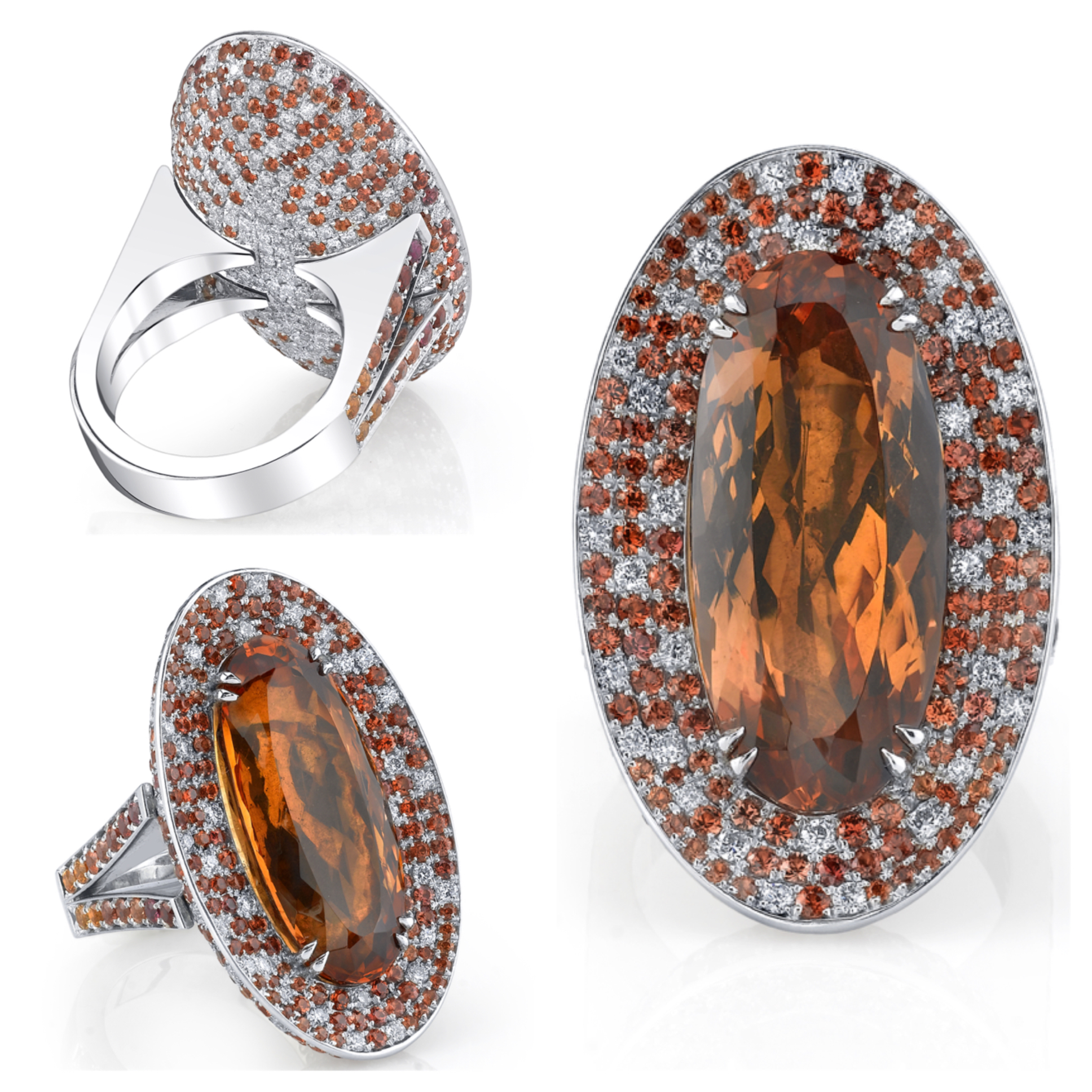June Birthstone (Moonstone)
In Europe, moonstone is considered to be the birthstone for June, although in the United States it shares that distinction with alexandrite and pearl. Moonstone is also the stone traditionally given in celebration of the 13th anniversary of marriage.
It is easy to see why ancient Hindu mythology believed moonstone was made of solidified moonbeams. In 100 AD, the Romans made jewelry with it and thought it was magically formed out of moonlight. Ancient Greeks linked the stone with the moon deities.
Moonstone comes from the mineral family feldspar, which is one of the most plentiful in the world, however fine gem quality moonstone is scarce. It's internal structure scatters the light that strikes it, creating a phenomenon known as adularescence. The more shimmer the stone has, the more valuable it is.
As you gaze into this hand-fabricated moonstone ring, it is easy to see why this ethereal gemstone has long been regarded to have calming, healing properties. Legend also says that two people wearing moonstone will fall passionately in love during a full moon.
November Birthstones
“Who first comes to this world below
With drear November’s fog and snow,
Should prize the topaz’s amber hue,
Emblem of friends and lovers true.”
There are two gems appropriate for November birthdays – Topaz and Citrine. November’s primary birthstone is Topaz, but it has had a rough history and has always been mistakenly confused with citrine. Both of these gemstones were found on a Mediterranean island named Tapazios. Since they were so alike in color, although not in shape or size, Citrine and Topaz were often mixed up.
The most prized color of Topaz is the Imperial Topaz, named after the Russian czars of the 1800s and their opulent taste. These stones feature a magnificent reddish-orange body of color with slightly pinkish undertones. In fact, topaz was often used to promote wisdom of the wearer, explaining the medieval custom of giving Topaz rings to diplomats and royals. Even Henry VIII, depicted by Hans Holbein, is painted wearing golden brown Topazes.
Topaz comes in many colors aside from brown, including yellow, yellow-gold, and orange, all very similar to the shades of citrine. Blue Topaz is very rarely produced by nature, but recent advancements in technology have made this gemstone readily available. Blue Topaz usually results from colorless Topaz that has been irradiated and heat-treated, resulting in light to deep shades of blue.
Citrine, on the other hand, is known as the “healing quartz” and is said to support vitality and health, while encouraging the wearer with energy and warmth. The stone’s name is derived from its color – citrón, the yellow of the lemon – although the most valuable gems are a clear, radiant yellow, or brownish red.
Both Citrine and Topaz jewels bring a shimmering brightness to dull November days, making these gemstones ideal for this time of year. Michael Barin’s ring below has a 21.99 carat weight precious Imperial Topaz center stone, set in 18 karat white gold and accented with diamonds and orange sapphires.


